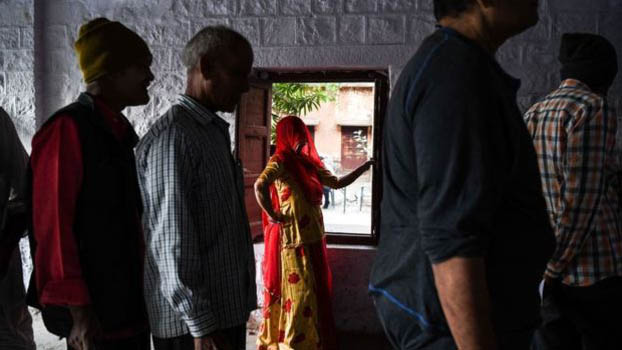Have no girls been born in 132 villages in India?

When reports emerged earlier this week that no girl had been born in 132 villages in the small Himalayan state of Uttarakhand in the last three months, it sparked panic and prompted a government investigation into the matter, reports BBC.
The "no girl villages" were reported from Uttarkashi, where some 400,000 people live in 550 villages and five towns. Much of the terrain is hilly and remote. In a country which has been grappling with an awful sex-ratio imbalance - largely because of illegal sex-selection abortions - the news has caused considerable anguish.
Except that this might not be completely true.
The reports said 216 boys and no girls were born in the 132 villages between April and June. But officials found 180 girls and no boys were born during the same period in 129 different villages. And to complete the mixed picture, 88 girls and 78 boys were born in another 166 villages.
Overall 961 live births were recorded in Uttarkashi between April and June. A total of 479 were girls, while 468 were boys. (The rest were possibly stillborn) This, officials say, corresponds favourably with the district's sunny sex ratio of 1,024 women for 1,000 men, higher than the national average of 933 women per 1,000 men.
Officials say the media possibly cherry-picked the birth data provided by volunteer health workers entrusted with collecting it. Some 600 of these workers are tasked with the job of recording pregnancies and births, and carrying out immunisation and birth control programmes.
"I feel media reports about the no-girl villages have been misinterpreted. Also, there is not enough understanding of the context. We've ordered an investigation anyway," Ashish Chauhan, the senior-most official of the district told me.
So 26 officials have fanned out across 82 villages to check the veracity of the data and to find out whether something is wrong.
Locals claim there is little history of discrimination between boys and girls in the district, and point to its favourable sex ratio.
"Be it girl or boy, we only pray that the child is healthy and happy," Roshni Rawat, a local woman, told the Hindustan Times newspaper.
Also, women here are typically more hardworking than men: labouring on farms, cutting grass, milking cows, cooking and doing household chores. Alcoholism among men is high.
Officials say they have not reported cases of female foeticide in the district for some years now. There are three registered ultrasound machines in the district, all in government clinics.
"There's no economies of scale here to carry out large-scale illegal abortions or tests to abort female births," says Mr Chauhan.
But there's an interesting caveat.
Of the 961 births here between April and June, 207 were recorded at home. (The rest were recorded in hospitals or institutions.) A total of 109 of them were male and 93 were girls, upending the overall sex ratio in this district.
"This is a bit of a puzzle. We have to investigate this further. Home births typically happen in far-flung villages where access to ambulances and clinics is difficult," Dr Chandan Singh Rawat, a senior medical officer of the district told me.
In a week's time, we will know more about the so-called "missing girls" of Uttarakhand.




